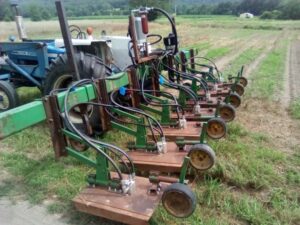Project Overview
Commodities
- Agronomic: corn, soybeans
Practices
- Crop Production: no-till
- Education and Training: demonstration, display, on-farm/ranch research
- Production Systems: organic agriculture
Summary:
No-till farming has numerous benefits over conventional farming including; improved soil quality, less soil loss, and less fossil fuel. Organic farming has its benefits: no herbicide use, socially desirable and higher price points for products.
Combining those two is a challenge. Organic weed control in row crop situations is cultivation based; in no-till it is herbicide based.
Yet many farmers are trying for this holy grail as can be evidenced from the many SARE grants that focus on no-tilling vegetables into killed cover crop mulches.
Growing row crops in this way is challenging: row crops stay season long in the field, as opposed to vegetables that have a shorter life span.
The cover crop holds the weeds back for a little while but eventually the weeds will come up in between the row. Due to the high residue conventional cultivation is not possible. I want to develop an alternative weed control method: a three-point-hitch mounted, two-row mower that can be used for in-between row weed control. The design will be such that it can be scaled up to a 6-row application.
Project objectives:
I want to develop an in-between hydraulically driven two-row mower that is inexpensive and effective, can be easily scaled up to 4 or 6 rows, and be used in row crops like beans and corn.
I want to make the design an open source design: I want to be able to provide design dimensions and drawings to anyone that is interested.
I want to use the mower at my farm.
I want to demonstrate and discuss the mower at my farm, and at field days at MU research center.
